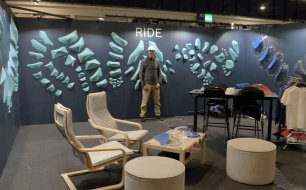Product successfully added to your shopping cart
What Materials Are Used to Manufacture Climbing Holds, and What Are Their Characteristics?
In this article, we explore the different materials used in the manufacturing of climbing holds and their unique properties, providing a range of options to meet your climbing needs.
1. PE (Polyester) Holds
Polyester is a thermosetting resin widely used in climbing hold manufacturing. Combined with fillers like silica or glass beads, PE provides an authentic rock feel with its gritty texture. Its benefits include a relatively low cost, excellent friction resistance, and a lifespan of 5 to 10 years with heavy use. However, PE has low impact and deformation resistance and can discolor over time or with UV exposure.
2. PU (Polyurethane) Holds
Polyurethane is a lightweight and flexible resin commonly used in climbing gyms in the United States. Unlike polyester, it requires little to no fillers, making it ideal for large holds. PU absorbs shocks and deformations well, though it is more costly than PE and may exhibit faster wear on grain and grip. Initially, its texture may feel more plastic, but it offers a comfortable handling experience for setters.
3. Fiberglass Macros
Fiberglass macros offer lightweight durability and resistance to mechanical stress. Their positive texture provides an abrasive, dry feel, ideal for bouldering. However, they are costly to produce, and their texture may wear down faster than PE or PU holds.
4. Wood Volumes
Wood volumes allow for screwing holds onto them, adding depth and variety to climbing routes. However, wood is a malleable and fragile material that requires careful handling and appropriate storage to prevent cracking and wear.
5. Thermoplastic Holds
Thermoplastic provides an eco-friendly alternative, as it can be recycled up to 10 times without losing its properties. Its lightness and flexibility make it an interesting choice for route setters, though it may wear quickly and has a plastic-like texture similar to PU.
In Summary
Each climbing hold material offers unique advantages and disadvantages, and the choice often depends on the specific needs of the climbing gym or route. Whether you prefer the authentic rock feel of PE, the lightness of PU, or the durability of wood, there is a suitable option for everyone.



